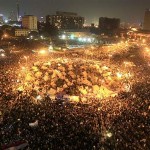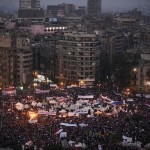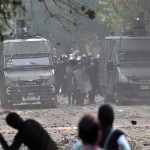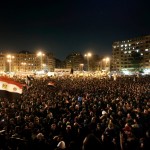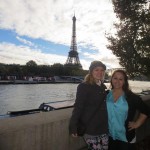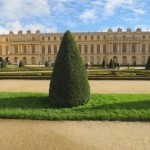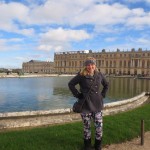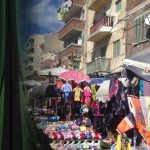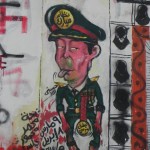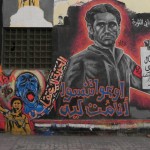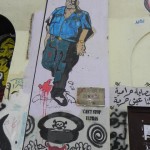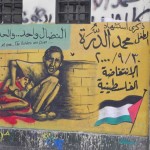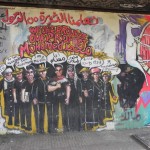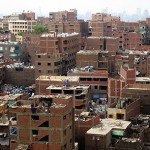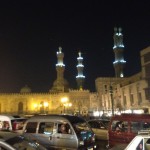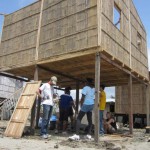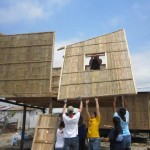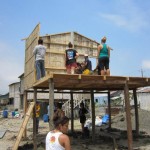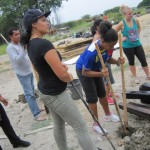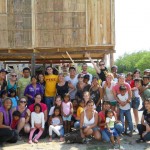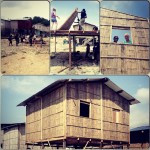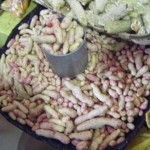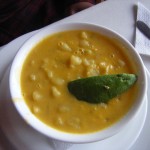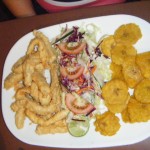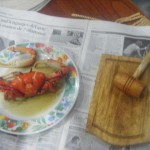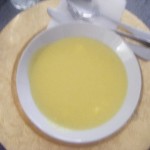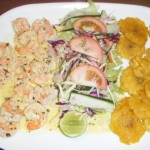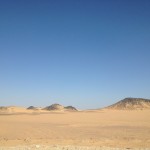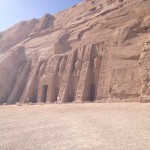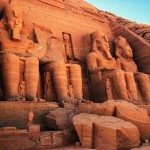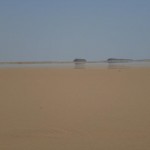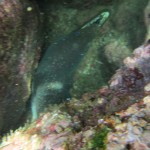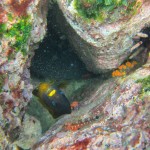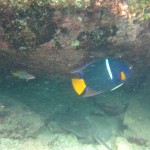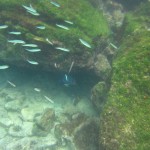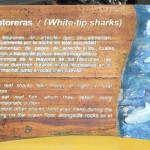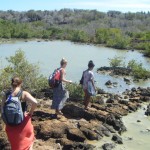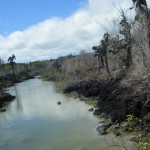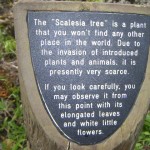As Egyptians fill Tahrir Square demanding a true democracy the leader of the country once again stands defiant to the outrage of the general public. President Morsi or “Pharaoh” Morsi as some have now called him, issued a decree on Thursday granting himself broad powers above any courts and labeled himself as the guardian of Egypt’s revolution. This immediately sparked outrage from all people within Egypt, except for his supporters within the Muslim Brotherhood. This outrage culminated in a Tuesday night demonstration which filled Tahrir square with over 100,000 protesters demanding Morsi rescind his decree. While there have been various protests all over Egypt since I arrived, none have appeared as big or important as what is happening now. For the first time since the Mubarak uprising people from all throngs of life are standing side by side and it is not only one dichotomy of the population. Not only are people not happy politically but there is also major concern for the economic situation in a country which has taken quite a hard financial downturn. There seems to be a buzz in the air and something is going to change unless Morsi acts quickly and decisively. With more rallies and protests planned for this weekend by opposition groups and the Muslim Brotherhood, it will be interesting to see what the outcome will be for Egypt’s fledgling democracy.
Below are some pictures from various news sites of the protests.
We recently spent a weekend in Paris, and trust me a weekend was all I could handle. Needless to say I didn’t have the greatest time in Paris. The city itself was absolutely beautiful and there was so much to see. We went with a tour group which was very smart seeing as none of my friends or I speak any french. I would advise anyone who is planning on travelling to Paris to use a tour group, it just made it so much easier since Paris is such a big city with so much to see.
The Eiffel tower at night is something I believe everyone should see once in their life. it actually takes your breathe away. The Palace of Versailles and the gardens were by far my favorite part of our trip to France. The Palace was spectral and there was just so much history to it.
The selling point of going on this trip though, was a huge chocolate festival that was held in Paris the weekend we were there. Aside from food and transportation, chocolate from the festival was all I spent my money on. No souvenirs, just chocolate, and it was worth it.
We did have some troubles in Paris though, plans fell though for part of our tour, it rained the whole weekend, and the drivers tended to drive straight through red lights which made me terrified to cross the street. There was also an incident with a man yelling at us in French over the fact that we couldn’t speak french. So that was fun.
I think my time in Paris was a little less enjoyable because I was sick and I also wasn’t too keen on going in the first place. My two friends had their hearts set on Paris and to me, Paris was hit or miss. If I went to Paris while I was here it would wonderful, but if I didn’t get the chance to go I wouldn’t get upset about it.
I am glad I went to Paris though, it was a once in a lifetime experience.
Since we couldn’t me home for Thanksgiving my other American friend and I brought Thanksgiving to Ireland!
It actually wonderful! We found a live-stream of the Thanksgiving Day Parade along with a copy Charlie Brown’s Thanksgiving. We had all of our friends over to watch with us while we cooked. Of course though once those were over the t.v. was taken over my Call Of Duty, which is actually what happens with my family back home on the holidays anyway, so it made it feel like a real Thanksgiving.
We cooked the entire meal with the help of one of the Irish girls that lives in our village. I even made the turkey, and I’m a girl who could barely make a turkey sandwhich before I got here late alone cook an entire turkey dinner! But we did it and it was actually really good! I mean it didn’t compare to the meal my Nana makes but I was proud of it. Of course there were some bumps in the road, lack the fact that we had to take all the gross stuff out of the turkey or when we forgot to put water in with the potatoes and burned the pot or when the whole tray of sweet potatoes mysteriously went missing ( we still have not found them) but overall it was a great Thanksgiving.
And after the meal one of our friends had a boxing match, so we all went together to see that. He won the match and we think its directly related to the wonderful meal he had before hand.
Our little Thanksgiving was exactly what I needed because I am finally starting to feel homesick. With it being a holiday, all I wanted was to be home spending it with my friends and family so the fact that I couldn’t do that made me rather upset. But our friends really enjoyed the meal and made it a Thanksgiving I will never forget. its nice to know that I have a little family here to celebrate with when I can’t be home with mine.
After attending a lecture by Mohamed Elshahed on the condition of the city of Cairo, its infrastructure, architecture and how both the government’s social and economical policies effect all peoples and the actual city itself, I realized I had not yet blogged about the city or its history. Ignoring that would be a fatal mistake because the city of Cairo is one of the oldest and largest metropolitan areas in the world. So, here is a quick, rudimentary history of the city, some of the problems it is facing since the revolution and an overview of Cairo in general. A quick disclaimer first, there are multiple variations of all of the facts stated below, especially when it comes to numbers and statistics.
Cairo was founded in 969 AD by the Fatimid dynasty. The land composing the present-day city was the site of national capitals whose remnants remain visible in parts of Old Cairo. It is very hard to determine the actual city limits of Cairo today because it is such a sprawling metropolis and includes many other cities, but the area around present-day Cairo, especially Memphis, had long been a focal point of Ancient Egypt due to its strategic location just upstream from the Nile Delta. However, the origins of the modern city are generally traced back to a series of settlements in the first millennium. In 1250 slave soldiers, known as the Mamluks, seized control of Egypt and like many of their predecessors established Cairo as the capital of their new dynasty. Construction projects initiated by the Mamluks pushed the city outward while also bringing new infrastructure to the center of the city. Meanwhile, Cairo flourished as a center of Islamic scholarship and a crossroads on the spice trade route among the civilizations in Afro-Eurasia. By 1340, Cairo had a population of close to half a million, making it the largest city west of China.
Under the Ottomans, Cairo expanded south and west . The city was the second-largest in the empire, behind only Constantinople.Throughout Ottoman rule and beyond, Cairo was under the influence and sometimes direct rule of the British empire before becoming fully independent in 1922. However, British troops remained in the country until 1956 and during this time urban Cairo, spurred by new bridges and transport links, continued to expand to include the upscale neighborhoods of Garden City, Zamalek, and Heliopolis. Between 1882 and 1937, the population of Cairo more than tripled and its area increased from 10 square kilometers (4 sq mi) to 163 square kilometers (63 sq mi). The metropolis began to encroach on the fertile Nile Delta, prompting the government to build desert satellite towns and devise incentives for city-dwellers to move to them.
The Cairo metropolitan area is estimated to be around 20 million people, making it one of the largest in the world and it continues to grow, leaving the government to deal with a continuing problem of over population in many of the most densely populated and poverty stricken parts of the city. This overpopulation has lead to some of the greatest traffic congestion to take place in the world. Even with increased railways and a subway system, traffic continues to be a problem of everyday life in Egypt. Also, the air pollution in Cairo is a matter of serious concern. On many days you can see great smog clouds, especially as the sun sets and you can feel the heavy air in your lungs. Another problem that has worsened since the revolution is the mountains of garbage lining the streets. However, despite its lack of infrastructure and its streets being overcrowded with both people and garbage there is something addictive about the city and is culture.
The economy of Cairo was ranked first in the Middle East and 43rd globally by Foreign Policy’s 2010 Global Cities Index. Cairo also boasts the world’s second-oldest institution of higher learning, al-Azhar University. That is just a quick overview of the long complicated history of the city and also an attempt to write out how massive the city actually is. Below are more pictures of the city as well as a lot of artwork/ graffiti that has been plastered around Tahrir since the revolution. There are three links for the information I had used to write this article including the blog of Mohamed Elshahed which is quite interesting ( Cairo observer) and is worth a look if you are interested in more. Happy Thanksgiving!
http://www.un.org/cyberschoolbus/habitat/profiles/cairo.asp
Of course- Wikipedia
http://cairobserver.com/about
One of the most special moments of this wonderful trip was helping build a home from scratch in 6 hours for a very poor family.
Hogar de Christo is a non-for-profit organization that works with the poor population of the coast region in Ecuador. The organization was founded in 1991 by a priest who felt the need to help the poor and give them a roof over their heads. Today the organization builds over 32 homes a day and over 100 homes a week. So far the organization has build just about 187,000 homes for the less fortunate families.
According to the spokes person of Hogar de Christo, 30% of Ecuador’s population lives in poverty. They make just about $2.47 a day from jobs they find on the streets. So these homes are relatively cheap for them to buy or pay off.
The homes are made out of cane and wood which can last up to 6 years. Once the families save enough money they can little by little change the cane and wood to cement walls.
This was an amazing experience because it made me see what is really is to live in absolute poverty. The homeless people in the US are better off then the less fortunate people here. It breaks my heart everyday to see children beg for money, food, and a place to sleep. By partaking in this experience, I have learned to not take anything for granted and give thanks everyday for the roof over my head and a bed to rest my head.
One of the amazing things that I most definitely love about Ecuador is there food. Food is my life and Ecuadorian food is not an exception. My host my since day one that I’ve been here she has been cooking amazing typical Ecuadorian dishes that are made in the coast of Ecuador. She uses just the right spice’s that makes my mouth water by just taking in a deep breath. As preciously mentioned, Ecuador is divided into 4 regions which are the coast, the highlands, the east, and the Galapagos. All 4 of these regions have their own dishes.
For example in the highlands there focus is on potato’s, pig’s (chancho), and there deliciousy Guinea Pig (Cui), and a delicious creamy soup that called locrio which consist of potato, cheese (that does not melt), and a slice of avocado.
In the cost they specialize more on seafood which is my favorite!!! They eat a lot of crab, shrimp, calamari, octopus, fish, and many more.
In Ecuador there main meal of the day is lunch. Lunch is the most important and the biggest meal of the day. Every lunch HAS TO HAVE a bowl of soup, and a side of rice. Lunch is not complete without those two things. It is interesting really because back home in the states the only time I found myself eating soup was when I was sick or when there was nothing else to eat.
Out of the many dishes that my host mom has cooked and that is one of the typical dish in the coast of Ecuador is “El Ceviche” which is a soup type dish that consist of any seafood of your choice mixed in with sliced and diced tomatoes onions, cilantro, and lemon juice. O and of course its side of rice.
UEES, the university, has an amazing culinary arts department in which I along with the other international students, had the opportunity to be chefs for a day and learned and cooked our very own ceviche plate which practically is the same plate as the picture above. Very good, but not as good as my host mama!!
Here are other delicious foods that this person right here got to eat!!
Also before I forget, Ecuador is one of if not only, the places that produces green plantines or green bananas for those who do not know the that term. They also have huge fields of cacao! Hopefully in the next couple of weeks my host mom will take to where her parents have their green banana and cacao plantation!!!!
On our last day in Luxor we woke up very early and took a three and a half hour drive south to Aswan. We had a two hour wait in Aswan before we could catch the caravan to Abu Simbol. During these two hours we walked around, drank coffee and went on the long hard search of finding a bathroom. Once our car arrived we joined a caravan with about three other cars full of tourists and two army/ police vehicles. For security reasons all trips to Abu Simbol must be like this, in a caravan. However, once we got on the highway the caravan seemed to break down and it was everyone for himself, who could go the fastest on the open desert road. Once we left the city limits of Aswan there was nothing, just a black strip of pavement and white sand in every direction for the next three and a half hours. Unlike the drive from Luxor to Aswan where there were many little villages and sparsely populated communities, the drive to Abu Simbol was one with no signs of life and very solemn. About half way there we started to notice water on the outer edges of the desert, but to our surprise it was nothing more than a mirage(as pictured below). It was quite a strange sight. It looked exactly like real water and sometimes it even took effect on the road and appeared to be real until the car drove up to its edge and it magically disappeared.
The magnificent temple of Abu Simbol, is quite an extraordinary sight, both on the inside and outside. With two temples hidden in the Nubian desert arising out of Lake Nasser, Abu Simbol is definitely one of the more impressive ancient sites in Egypt. The complex is part of the UNESCO World Heritage Site known as the “Nubian Monuments.” The twin temples were originally carved out of the mountainside during the reign of Pharaoh Ramesses II in the 13th century BC, as a lasting monument to himself and his queen Nefertari, to commemorate his alleged victory at the Battle of Kadesh, and to intimidate his Nubian neighbors. However, the complex was relocated in its entirety in 1968, on an artificial hill made from a domed structure, high above the Aswan High Dam reservoir. The relocation of the temples was necessary to avoid their being submerged during the creation of Lake Nasser, the massive artificial water reservoir formed after the building of the Aswan High Dam on the Nile River. Below are pictures of the temples, the lake and other pictures from the journey.


